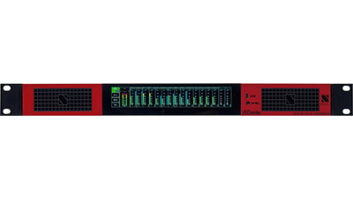
As technology evolves there is a continued drive for more – more efficiency, more functionality, more flexibility – and all at a lower cost. This is particularly true as technology and its users move towards enhanced connectivity for devices, systems and machines. Traditionally the broadcast control room has been dominated by proprietary, bespoke technology solutions, but that is slowly changing as the industry adopts a more integrated approach after realising the benefits of the convergence of IT technologies.
This increased connectivity is made possible through the use of a standard IP network, which is characterised by efficiency, reliability, cost-effectiveness and the ubiquitous nature of IP itself. In the broadcast environment, IP is being used in a number of applications, however it is not yet being employed as the standard transport layer throughout.
KVM in the control room
One of the biggest trends in the gallery at the moment is consolidation. In the past, control rooms featured many small, contained environments. However, in an effort to gain a more comprehensive view of operations, these smaller sites have been merged into a larger control centre. This is easier to accomplish because of the development of technology and IP networks that facilitate monitoring of video content and data from anywhere.
The main area where IP-as-standard is making its mark is KVM (keyboard, video and mouse). IP-based KVM brings added functionality, scalability and cost savings to the gallery environment. Essentially, IP-based KVM transforms a single screen into a portal for several computers – none of which need to be in the same physical location as the screen and input device.
IP-based KVM allows operators to move computers into another room, be it on a different floor or building, and enables them to operate these machines via a keyboard, monitor and mouse. This opens up a world of possibilities for the control room. Operators can log into any machine and perform a number of functions from anywhere – they are no longer bound to a specific workstation.
Staff efficiency
Not only does the control room environment become more flexible, and therefore more productive, but more space is made available, less heat and noise produced, and less air conditioning needed. Fewer staff members can perform the same amount of work by switching between machines using the same keyboard, monitor and mouse. Through the use of extension technology, USB and video signals can be delivered to the user. Multiple machines can thus be controlled by one person or several people in different locations. This has particular advantages for applications such as late night news production where broadcasts do not necessarily take place with a complete team.
In addition, two operators can view the same content on different screens. While one user can actively work on the content and have control, the other can view it in real-time. This is useful in supervisory applications – a studio manager observing several editors in a news broadcast, for example, as well as for seamless shift handovers.
Scalability
In a typical broadcasting environment, scalability and the ability to upgrade technology is crucial in staying abreast of technology developments. From an IP-based KVM perspective, scalability is relatively simple. All that is needed is the addition of end points to the system. This can be done by normal IT staff as no specialist expertise is required. This differs greatly from bespoke technology where the cost of increasing the system by just one end point is significant and requires the addition of equipment (often made to order with long lead times) that has to be installed by engineers with specific knowledge of the proprietary technology.
Broadcast control rooms manage mission critical tasks and as a result reliability is a top priority. The use of IP as a standard can bring greater performance and opportunities for redundancy to the environment.
From a KVM point of view, failures can occur at the workstation, on the computer or on an individual node of the system. If one of these areas falls over, there is little to no effect on the other areas and individual components can be replaced quickly and easily. This is particularly true of the switching component – IP-based KVM technology makes use of high specification, off-the-shelf devices that can be easily obtained and are inexpensive to keep in stock.
In addition, if all machines are linked via a high performance KVM system, the failure of one piece of equipment is easily handled. An operator can simply move into another studio and access the same computer from a new workstation and continue with what they were working on.
As control rooms move towards larger, more centralised environments, the need for efficiency and reliability in these mission critical hubs has never been more important. The single control ecosystem will ensure that resources are used more effectively, while the continuing adoption of IP as a standard transport layer within the environment will bring better cost-effectiveness, opportunities for scalability, interoperability and functionality.
By John Halksworth, senior product manager, Adder Technology






